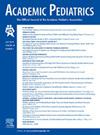在9岁开始接种HPV疫苗:来自美国五个卫生系统的成功策略。
IF 2.8
3区 医学
Q1 PEDIATRICS
引用次数: 0
摘要
目的:研究目的是探索卫生系统如何成功地在9岁时常规启动人乳头瘤病毒(HPV)疫苗接种,目的是与全国卫生系统分享最佳实践。最终目标是提高HPV疫苗接种率,以解决由于疫苗接种不理想而导致的HPV持续高患病率,对9岁开始接种疫苗有强烈的兴趣和支持。方法:在实施研究综合框架的指导下,在美国五个卫生系统中进行了一项混合方法研究,使用调查和访谈来了解与9岁儿童成功接种HPV疫苗相关的最佳做法。对调查结果进行量化和总结。内容和快速定性分析以及数据简化方法被应用于从访谈中总结内容并提取共同主题。结果:共完成了497项调查,并在五个地理和结构不同的美国卫生系统进行了10次访谈。与会者包括儿科医生、护士、诊所管理人员、质量和人口健康负责人以及免疫战略家。确定的成功干预措施包括分享关于疫苗接接率的数据,获得领导和工作人员的支持/所有权,电子健康记录更新和对提供者和工作人员的教育/培训,以及对患者和家属的早期准备和教育。结论:在美国卫生系统中,通过识别和解决障碍,并在患者/家庭、提供者/工作人员和组织层面利用多层次干预措施,可以成功实施9岁开始接种HPV疫苗的计划。本文章由计算机程序翻译,如有差异,请以英文原文为准。
Initiating Human Papillomavirus Vaccination at Age 9: Strategies for Success From 5 US Health Systems
Objective
The study objective was to explore how health systems have successfully initiated human papillomavirus (HPV) vaccination routinely at age 9 with the goal of sharing best practices with health systems nationwide. The ultimate goal is to increase HPV vaccination rates to address the persistent high prevalence of HPV resulting from suboptimal vaccination, with strong interest and support for vaccination initiation at age 9.
Methods
Guided by the Consolidated Framework for Implementation Research, a mixed methods study was conducted in 5 US health systems using surveys and interviews to learn about best practices associated with successful HPV vaccination initiation among 9-year-old children. Survey responses were quantified and summarized. Content and rapid qualitative analysis along with data reduction methods were applied to summarize content from the interviews and extract common themes.
Results
A total of 497 surveys were completed and 10 interviews were conducted at 5 geographically and structurally diverse US health systems. Participants included pediatricians, nurses, clinic managers, quality and population health leaders, and immunization strategists. Successful interventions identified included sharing data on vaccination rates, obtaining leadership and staff buy-in/ownership, electronic health record updates and education/training for providers and staff, and early preparation and education for patients and families.
Conclusions
Programs to initiate HPV vaccination at age 9 can be successfully implemented in US health systems by identifying and addressing barriers and utilizing multitiered interventions at the patient/family, provider/staff, and organization levels.
求助全文
通过发布文献求助,成功后即可免费获取论文全文。
去求助
来源期刊

Academic Pediatrics
PEDIATRICS-
CiteScore
4.60
自引率
12.90%
发文量
300
审稿时长
60 days
期刊介绍:
Academic Pediatrics, the official journal of the Academic Pediatric Association, is a peer-reviewed publication whose purpose is to strengthen the research and educational base of academic general pediatrics. The journal provides leadership in pediatric education, research, patient care and advocacy. Content areas include pediatric education, emergency medicine, injury, abuse, behavioral pediatrics, holistic medicine, child health services and health policy,and the environment. The journal provides an active forum for the presentation of pediatric educational research in diverse settings, involving medical students, residents, fellows, and practicing professionals. The journal also emphasizes important research relating to the quality of child health care, health care policy, and the organization of child health services. It also includes systematic reviews of primary care interventions and important methodologic papers to aid research in child health and education.
 求助内容:
求助内容: 应助结果提醒方式:
应助结果提醒方式:


